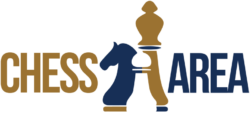What Is a Decoy in Chess?
When you’re learning to play chess, one of the moves you’ll run across is the decoy. Which is sometimes confused with another technique called deflection.
In this article, we’ll concentrate on decoying but also let you know some of the differences between that and deflection.

Essentially, a decoy is a move where you force one of your pieces to a square. Even though they don’t want to be there. You’ll lure one of your pieces – usually a king or queen – to a certain square. And you do this as a means of sacrifice on that square. As a result, you can use the piece’s new placement to obtain a certain advantage.
What is a Simple Decoy in Chess?
More specifically, a simple decoy example is… you force a piece to a square in order to lure a piece into a fork, remove a defender, or lure a king into checkmate. We discuss what a fork is a little later on, so bear with us.
As you know, a lot of chess games are either won or lost due to one tactical move. The decoy is one of the most common tactics used for this.

It involves finding a poisoned square that you know your opponent doesn’t want to go to, then doing everything possible to make them go there.
Oftentimes, you’ll do this because you want to force a king or queen to a poison square. In particular when you give up substantial material to do it.
One thing you should keep in mind when you practice this move is that you don’t necessarily have an advantage just because you move them to a poisoned square.

There are times when the reason you want them to move their king to a specific poisoned square is because it gives you the opportunity to enjoy a more powerful attack. But sometimes, once you lead the opponent’s piece into a trap, you can obtain a definite advantage from that point forward.
What Is the Difference Between Decoy and Deflection in Chess?
Lots of beginning chess players think that a decoy and a deflection in chess are the same thing, but this is not the case.
In reality, deflection is the opposite of a decoy. In deflection, you are deflecting the piece and not leading it.
If you see a piece that is defending a certain square, deflection can be used to distract that piece so it is not successful. Once your opponent’s piece is deflected, you can concentrate on carrying out the tasks necessary to gain an edge. Things that couldn’t have happened had the piece not been deflected.

So, both decoys and deflections can be used to distract enemy pieces. Because of this, if you notice that an enemy piece has been controlling the position, you can start planning how you can use either decoy or deflection to get that piece into a weaker position.
If there is a certain piece protecting the opponent’s back rank, you might consider deflection as your next move. If you’re successful, you can win either checkmate, check, or take a piece off the board.
What Is a Fork in Chess?
You’ve likely already assumed that a fork is a tactical move in chess, but how does it work?
Basically, a fork is when a piece attacks two or more other pieces simultaneously. Normally, your goal as the attacker is to either capture one of the forked pieces or threaten checkmate.

For the defender, it is usually very hard to counter this many threats in one move. So it puts them at a definite disadvantage. And while many pieces can fork, knights in particular seem to strike well when they’re forking.
A common move involves the rook and king fork. This occurs when the attacker’s knight is placed in a position that doesn’t allow any piece to take that knight. In addition, the king is put under check while the helpless rook is moving just as the king moves out of check.
For a great fork to occur, the first thing you need to look for are any queen or bishops that might throw off the tactic. You should aim for diverting both of them to other squares. If you have to sacrifice one or two pawns in the process, you’ll still be better off in the end.
If it’s possible, keep your opponent’s queen near your knight in case you get the opportunity for a double fork.

Also, keep in mind that with forks, not just a rook can be taken. You can take pieces such as the queen or even trade for either a fellow knight or a bishop.
Another tip to remember is that when you take a major piece, e.g., a queen or a rook. In most cases your knight is going to be sacrificed.
- Is Chess.com Premium Worth It? - May 25, 2023
- How To Set Traps In Chess? - May 25, 2023
- Chess.com Review - May 25, 2023
